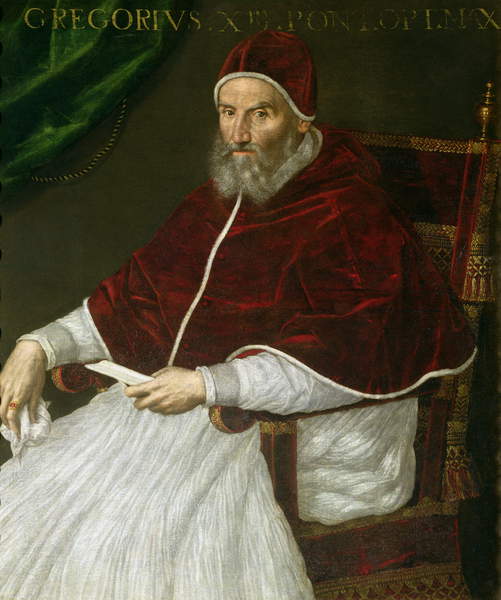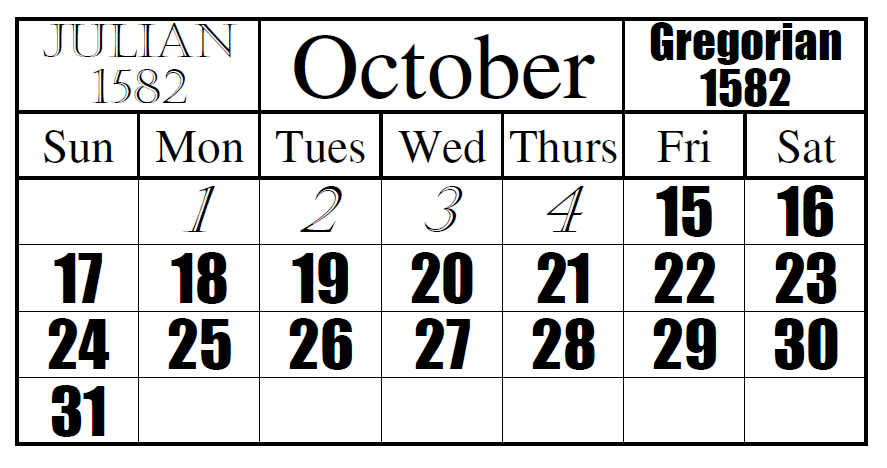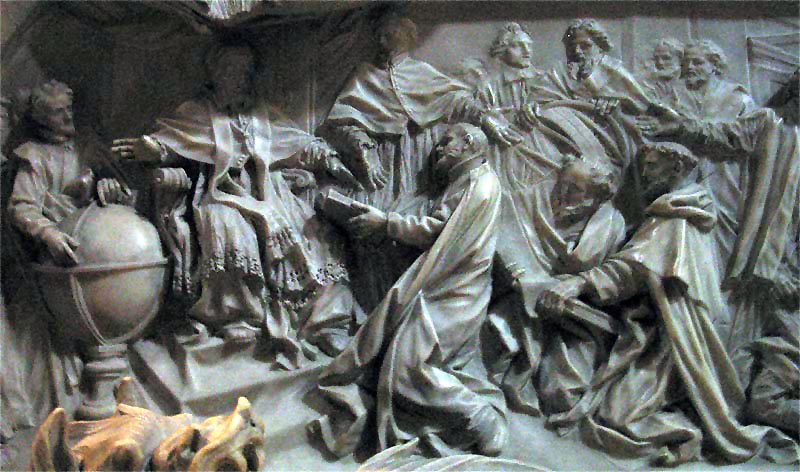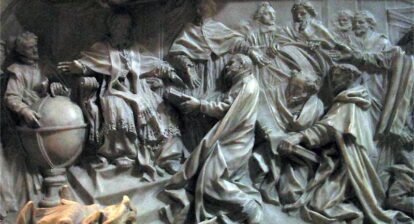Christian World Adopts New Calendar on October 4, 1582
October 4th, 1582 was the last day of the Julian calendar. To sync to the Gregorian calendar, 10 days were skipped, making the next day October 15
The Julian calendar was proposed by Julius Caesar in 46 BC and was put into use on January 1, 45 BC. It was very close to the actual length of the year but was still found to drift, leaving almost a day in a period of 128 years, because it was 365.25 days long. By 1582 it had drifted a full 10 days from the actual date.
Pope Gregory XIII introduced the Gregorian calendar in 1582 via a papal bull, because the Julian calendar was becoming inaccurate, especially in the calculation of the date of Easter, which was moving away from the Spring Equinox on March 21. The move to reform it had started in the reign of Pope Paul III in 1545.

Pope Gregory III portrait by Lavinia Fontana 16C (Wikipedia)
Ten days were omitted from the Julian calendar and the day following October 4, the day on which the Gregorian calendar was adopted, was October 15 in 1582. It made the average year 365.2425 days long (10.8 minutes shorter than the Julian calendar), approximating the 365.2422-day tropical year based on the Earth’s revolution around the Sun.

This is a visual example of the official date change from the Julian calendar to the Gregorian. (Wikipedia)
The Julian calendar included an extra day in February every four years (Leap Year). However, Aloysus Lilius, the Italian scientist who initially developed the new Gregorian system, realized that the addition of days made the calendar too long. He devised a system whereby leap years can be calculated as:
“Every year that is exactly divisible by four is a leap year, except for years that are exactly divisible by 100, but these centurial years are leap years if they are exactly divisible by 400. For example, the years 1700, 1800, and 1900 are not leap years, but the year 2000 is.”

Detail of the pope’s tomb by Camillo Rusconi (completed 1723); Antonio Lilio is genuflecting before the pope, presenting his printed calendar. (Wikipedia)
The German mathematician and astronomer Christopher Clavius modified the Gregorian calendar after the death of Aloysus Lilius, proposing a final calendar reform that was adopted in 1582.

Christopher Clavius (black and white sketch) Wikipedia
The Gregorian calendar was soon adopted by catholic countries around the world. However, initially there were issues with its adoption elsewhere, with Protestants rejecting it because they considered it a papal plot to silence their movement. Eventually Protestant countries accepted the new system by the 1700s, with Great Britain and its colonies adopting it in 1752. Before this, the English new year began on March 25 (Lady Day or Feast of the Annunciation that commemorates the visit of the archangel Gabriel to the Virgin Mary), because it carried more religious significance. Some European countries considered December 25 (Christmas) as the start of the new year.
Orthodox countries were even more resistant, taking the next few centuries to finally embrace the new system. Greece was the last Christian Orthodox country to do so in 1923. Even so, national churches in Orthodox countries have never fully accepted Pope Gregory’s reforms. Still, the calendar is now used all over the world and also carries secular references such as “Common Era”.
Although Aloysus Lilius’ method closely synced the calendar with the seasons, his system is still off by 26 seconds. This means that since its introduction in 1582, there has been a discrepancy of several hours, with the result that the Gregorian calendar will be a full day ahead of the solar year by the year 4909.


